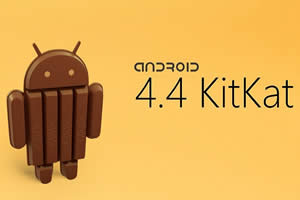Difference between Kitkat and Lollipop
Key Difference: Kitkat is also known as version 4.4 in its scientific language, while lollipop is version 5.0 that was announced in November 2014 and succeeds Kitkat.
 Kitkat and Lollipop are not types of delicious chocolates, but are also two versions of Google’s Android operating systems. These follow in the long list of chocolate or dessert inspired names for the different android versions Google has concocted. Android Kitkat is also known as version 4.4 in its scientific language, while lollipop is version 5.0 that was announced in November 2014 and succeeds Kitkat.
Kitkat and Lollipop are not types of delicious chocolates, but are also two versions of Google’s Android operating systems. These follow in the long list of chocolate or dessert inspired names for the different android versions Google has concocted. Android Kitkat is also known as version 4.4 in its scientific language, while lollipop is version 5.0 that was announced in November 2014 and succeeds Kitkat.
KitKat was introduced in October 2013 and succeeds Android Jelly Bean, which covers versions 4.1, 4.2 and 4.3. Although, it was initially named Key Lime Pie, when it was launched, Google changed it’s name to KitKat. KitKat offered interesting features over the previous version.
Features included:
- Refreshed interface with white elements instead of blue
- Clock no longer shows bold hours
- Ability for applications to trigger translucency in the navigation and status bars
- Action overflow menu buttons are always visible, even on devices with a "Menu" key
- Allows NFC
- Wireless printing capability
- New framework for UI transitions
- Settings application now makes it possible to select default text messaging and home (launcher) application
- Native infrared blaster API
- Android Runtime (ART) introduced as a new experimental application runtime environment, but not enabled
- Settings application no longer uses a multi-pane layout on devices with larger screens
- Wi-Fi and mobile data activity (TX/RX) indicators are moved to quick settings
 The android Lollipop is the latest version released by Google and is yet to hit the market in any Google based device. Some phones have already received the update, with many other phones still waiting. Lollipop has changed drastically over KitKat and also includes a whole new design and look of the UI.
The android Lollipop is the latest version released by Google and is yet to hit the market in any Google based device. Some phones have already received the update, with many other phones still waiting. Lollipop has changed drastically over KitKat and also includes a whole new design and look of the UI.
Features included:
- Android Runtime (ART) with ahead-of-time (AOT) compilation and improved garbage collection replaces Dalvik.
- Support for 64-bit CPUs
- Recent activities screen with tasks instead of applications
- Vector drawables, which scale without losing definition
- Support for print previews
- Material design style
- Lockscreen now shows notifications and swipe to application settings
- Refreshed notification tray and quick settings pull-down
- Do Not Disturb option
- Safe zones that allow the user to not have to input a password each time
- Project Volta, for battery life improvements
- Search inside settings
- Multiple user accounts, including guest accounts
- Audio input and output through USB devices
- WebViews receive updates independently through Google Play for security reasons, instead of relying on system-wide vendor updates
Comparison between Kitkat and Lollipop:
|
|
Kitkat |
Lollipop |
|
Release |
October 31, 2013 |
November 12, 2014 |
|
Design |
Holo: simple and minimalist design with dark settings list |
Material: uses a card-based design with 2D features. It has bright colors and animations everywhere. Banks on fluidity |
|
Lockscreen |
Swipe left to open the camera. Widgets allow more interactivity on the lockscreen |
Swipe up to unlock, left to launch the camera and right to open the dialer. Allows notifications right on the lock screen |
|
Homescreen |
Allows widgets and apps on the home screen with back button, home button and the recent apps button on the bottom of the screen |
New applications, home button, recent apps button and back button have changed been changed in design to circle, square and back, respectively. |
|
Multi-tasking/ Recent apps |
2D list of running applications with mini visual, allows closing apps with a swipe to the left or the right. |
3D rotary style that is bigger in size. Allows swiping to the right or left to close, added X button as well. New feature allows tabs of individual cards, not only applications. (i.e.: if multiple tabs are open in Chrome, it will show all tabs individually) |
|
Notification bar |
Drop down bar that shows the apps in a tile format with the user profile taking up on tile on the top left corner. |
Double sliding on the notification bar allows access to quick settings, which includes screen brightness slider, notifications (including do not disturb), and cast screen. User profile is a small circle on the top right corner instead of taking a tile. |
|
Notifications |
Notification bar shows notifications in a chronological order, allowing swipe to dismiss or a tap to access |
Notifications have white background, they are arranged not in chronological order but rather priority. Allow swipe to dismiss but double tap to access the app. Also, allows rejecting a call without having to end the current task at hand. Offers ‘Do Not Disturb’ mode that allows only ‘important’ notifications through |
|
Performance |
Used Dalvik process virtual machine. No support for 64-bit processors |
Upgraded to ART (Android Run Time), which is faster. Allows support for 64-bit processors |
|
Battery life |
Battery life is weak because of demanding applications |
Has a pre-installed battery saver mode. Project Volta: reorganises background app activity into batches to save unnecessary phone waking, does not send automatic data requests if it sees a weak signal. Increases battery life by approximately 35%. |
|
Security |
Pattern, Face recognition, PIN code, etc. |
Location and proximity based features. Allows safe zones, where the phone locks do not kick in. If phone detects Android Wear smart watch, it does not unlock the phone or tablet |
|
Connectivity and APIs |
Allows limited connectivity between different handsets |
Allows interactivity between different devices of different classes. Built in Android TV. Consistent experience between smartphones, tablets, TVs, and smartwatches. Offers 5,000 new APIs for developers |
|
Settings menu |
White on black with blue highlights. KitKat put switches up front |
Light gray Roboto font with green icons on a white ground. Lollipop embeds switches a layer down |
|
Flashlight |
Requires external applications |
Inbuilt application with a button on the notifications bar |
|
User profiles |
Allows one profile linked with Google account |
Allows multiple profiles, including guest profile, which ensures the user can keep certain things secret on their phone |
|
Android easter egg |
Tapping offers the Kitkat’s K that spins around |
Tapping the version in the About section of the phone, allows flappy bird inspired android game |
Image Courtesy: forum.xda-developers.com, androidadvices.com









Add new comment